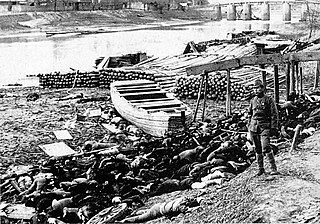 W
WWar crimes were committed by the Empire of Japan in many Asian-Pacific countries during the period of Japanese imperialism, primarily during the Second Sino-Japanese War and World War II. These incidents have been described as an "Asian Holocaust", but this characterisation has been challenged by scholars on the basis of unique features of the Holocaust. Some war crimes were committed by Japanese military personnel during the late 19th century, but most were committed during the first part of the Shōwa era, the name which was given to the reign of Emperor Hirohito.
 W
WWar crimes in Manchukuo were committed during the rule of the Empire of Japan in northeast China, either directly, or through its puppet state of Manchukuo, from 1931 to 1945. Various war crimes have been alleged, but have received comparatively little historical attention.
 W
WThe Battle of Ambon occurred on the island of Ambon in the Dutch East Indies, as part of the Japanese offensive on the Dutch colony during World War II. In the face of a combined defense by Dutch and Australian troops, Japanese forces conquered the island and its strategic airfield in several days. In the aftermath of the fighting, a major massacre of many Dutch and Australian prisoners of war (POW) followed suit.
 W
WThe Japanese occupation of the Andaman Islands occurred in 1942 during World War II. The Andaman and Nicobar Islands, are a group of islands situated in the Bay of Bengal at about 1,250 km (780 mi) from Kolkata, 1,200 km (750 mi) from Chennai and 190 km (120 mi) from Cape Nargis in Burma. Until 1938 the British government used them as a penal colony for Indian and African political prisoners, who were mainly put in the notorious Cellular Jail in Port Blair, the biggest town (port) on the islands. Today they form a Union Territory of India.
 W
WThe Aso Mining forced labour controversy concerns the use of Allied prisoners of war (POW) and Korean conscripts as labourers for the Aso Mining Company in Japan during World War II. Surviving labourers and other records confirmed that the prisoners and conscripts were forced to work in harsh, brutal conditions for little-to-no pay and that some died, at least in part, because of the ill-treatment at the mine.
 W
WThe Bahay na Pula is a former hacienda in San Ildefonso, Bulacan in the Philippines. The site is remembered for the mass rapes and murders committed by the Imperial Japanese Army during World War II. The Japanese military murdered all of the men and boys in Mapaniqui, Pampanga, and forced over 100 women and girls into sexual slavery, confining and raping them in the Red House.
 W
WThe Bangka Island massacre was committed during World War II in the Pacific, on Bangka Island, east of Sumatra in the Indonesian archipelago. On 16 February 1942, Imperial Japanese soldiers machine-gunned 22 Australian Army nurses and 60 Australian and British soldiers and crew members who had survived the sinking of Vyner Brooke by Japanese bombers. South Australian nurse Sister Lt Vivian Bullwinkel, an American Eric Germann and Stoker Ernest Lloyd RN were the only survivors.
 W
WThe Bataan Death March was the forcible transfer by the Imperial Japanese Army of 60,000–80,000 American and Filipino prisoners of war from Saysain Point, Bagac, Bataan and Mariveles to Camp O'Donnell, Capas, Tarlac, via San Fernando, Pampanga, where the prisoners were forced to march until they died. The transfer began on April 9, 1942, after the three-month Battle of Bataan in the Philippines during World War II. The total distance marched from Mariveles to San Fernando and from the Capas Train Station to Camp O'Donnell is variously reported by differing sources as between 60 and 69.6 miles. Differing sources also report widely differing prisoner of war casualties prior to reaching Camp O'Donnell: from 5,000 to 18,000 Filipino deaths and 500 to 650 American deaths during the march. The march was characterized by severe physical abuse and wanton killings. After the war, the Japanese commander, General Masaharu Homma and two of his officers were tried in United States military commissions on charges of failing to prevent their subordinates from committing war crimes.
 W
WBatu Lintang camp at Kuching, Sarawak on the island of Borneo was a Japanese internment camp during the Second World War. It was unusual in that it housed both Allied prisoners of war (POWs) and civilian internees. The camp, which operated from March 1942 until the liberation of the camp in September 1945, was housed in buildings that were originally British Indian Army barracks. The original area was extended by the Japanese, until it covered about 50 acres. The camp population fluctuated, due to movement of prisoners between camps in Borneo, and as a result of the deaths of the prisoners. It had a maximum population of some 3,000 prisoners.
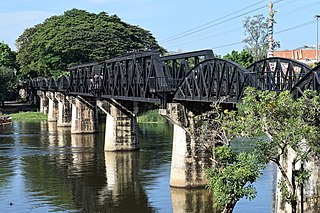 W
WThe Burma Railway, also known as the Death Railway, the Siam–Burma Railway, the Thai–Burma Railway and similar names, is a 415 km (258 mi) railway between Ban Pong, Thailand and Thanbyuzayat, Burma, built by prisoners of war of the Japanese from 1940–1944 to supply troops and weapons in the Burma campaign of World War II. This railway completed the rail link between Bangkok, Thailand and Rangoon, Burma. The name used by the Japanese Government is Tai–Men Rensetsu Tetsudō (泰緬連接鉄道), which means Thailand-Burma-Link-Railway.
 W
WAustralian Hospital Ship (AHS) Centaur was a hospital ship which was attacked and sunk by a Japanese submarine off the coast of Queensland, Australia, on 14 May 1943. Of the 332 medical personnel and civilian crew aboard, 268 died, including 63 of the 65 army personnel.
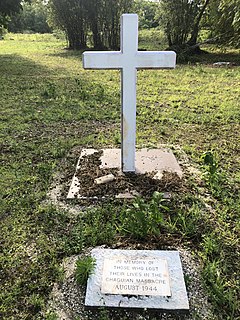 W
WChaqui'an Massacre Site, at Chalan Emsley in Yigo on Guam, was the site of a massacre in 1944 by Japanese soldiers of 45 native Chamorro men. The men were from 15 to 76 years old, and were dressed in civilian clothes. They were tied and were beheaded. The site, a 1.94 acres (0.79 ha) area, was listed on the National Register of Historic Places in 2016.
 W
WComfort women or comfort girls were women and girls forced into sexual slavery by the Imperial Japanese Army in occupied countries and territories before and during World War II. The name "comfort women" is a translation of the Japanese ianfu (慰安婦), a euphemism for "prostitutes".
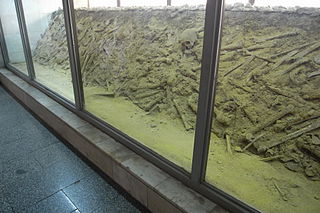 W
WThe total death toll of the Nanjing Massacre is a highly contentious subject in Chinese and Japanese historiography. Following the outbreak of the Second Sino-Japanese War, the Japanese Imperial Army marched from Shanghai to the Chinese capital city of Nanking, and though a large number of Chinese POWs and civilians were slaughtered by the Japanese following their entrance into Nanking on December 13, 1937, the precise number remains unknown. Since the late-1960s when the first academic works on the Nanking Massacre were produced, estimating the approximate death toll of the massacre has been a major topic of scholarly debate.
 W
WZhang Dinghuang, also known as Zhang Fengju was born in Nanchang. He was an author, literary critic, translator, and expert in antique manuscripts (古迹文物). Zhang was a supporting but key figure of the rich 20th century Chinese literary movements.
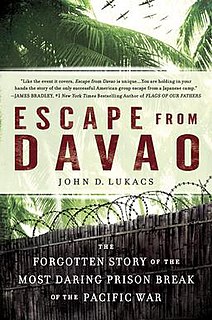 W
WEscape From Davao: The Forgotten Story of the Most Daring Prison Break of the Pacific War, is a non-fiction, military history book written by John D. Lukacs. The book is the story of the only large-scale group of American prisoners of war to escape from a Japanese prison camp in the Pacific Theater during World War II. The ten escaped POWs were the first to break the news of the infamous Bataan Death March and other atrocities committed by the Japanese to the world.
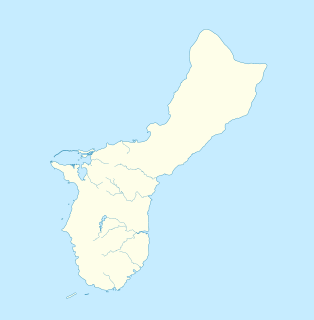 W
WThe Faha Massacre Site is located just behind the Pigua cemetery in the village of Merizo on the United States island of Guam. The site is demarcated by four concrete pillars, connected by metal cables, with several crosses placed inside that area. A metal plaque mounted on a concrete block commemorates the thirty native Chamorro men who were slaughtered here on July 16, 1944 by members of the Imperial Japanese Army (IJA) during the Japanese occupation of the island during World War II. The IJA routinely forced Guam's native population to work on its construction projects. The men who were killed here were rounded up for a work crew; why they were killed is unclear, as there were no survivors. The massacre took place one day after the Tinta Massacre, and about one week before the liberation of the island began.
 W
WFilipina Comfort Women was a statue publicly displayed along Baywalk, Roxas Boulevard in Manila. Unveiled on December 8, 2017, and installed through the National Historical Commission of the Philippines (NHCP) and other donors and foundations, it was dedicated to the Filipino "comfort women", who worked in military brothels in World War II including those who were coerced into doing so.
 W
WFour Fires is a novel written by Bryce Courtenay. It was first published in 2001.
 W
WThe Hanaoka mine was an open-pit mine with major deposits of “black ore”, located in the Tōhoku region of northern Japan in the village of Hanaoka, Kitaakita District, Akita Prefecture. The area is now part of the city of Ōdate.
 W
WA hell ship is a ship with extremely inhumane living conditions or with a reputation for cruelty among the crew. It now generally refers to the ships used by the Imperial Japanese Navy and Imperial Japanese Army to transport Allied prisoners of war (POWs) and romushas out of the Dutch East Indies, the Philippines, Hong Kong and Singapore in World War II. These POWs were taken to the Japanese Islands, Formosa, Manchukuo, Korea, the Moluccas, Sumatra, Burma, or Siam to be used as forced labor.
 W
WHellfire Pass is the name of a railway cutting on the former Burma Railway in Thailand which was built with forced labour during the Second World War, in part by Allied prisoners of war. The pass is noted for the harsh conditions and heavy loss of life suffered by its labourers during construction. It was called Hellfire Pass because the sight of emaciated prisoners labouring by burning torchlight resembled a scene from Hell.
 W
WIanjo (慰安所) is a military brothel, established by Japanese during World War II. First ianjo was founded in Shanghai, China. Based on these estimates, most international media sources quote about 200,000 young women were kidnapped by Japanese soldiers to serve in military brothels. The BBC quotes "200,000 to 300,000", and the International Commission of Jurists quotes "estimates of historians of 100,000 to 200,000 women."
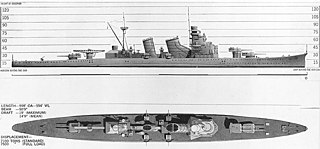 W
WIn March 1944, a force of three Imperial Japanese Navy (IJN) heavy cruisers raided Allied shipping in the Indian Ocean. The cruisers departed Japanese-held territory on 1 March with the support of other IJN vessels and aircraft. On 9 March, they encountered and sank the British steamer Behar, with the heavy cruiser Tone picking up over 100 survivors. Fearing detection, the Japanese force subsequently returned to the Netherlands East Indies (NEI), arriving on 16 March. Two days later, most of Behar's crew and passengers were murdered on board Tone. Following the war the commander of the raid, Rear Admiral Naomasa Sakonju, was executed for this war crime and Tone's captain Haruo Mayuzumi (ja:黛治夫) was sentenced to seven years imprisonment.
 W
WThe Jesselton revolt was a revolt by a resistance movement known as the Kinabalu Guerrillas, comprising local Chinese, indigenous peoples, Eurasian and Sikh Indian of Jesselton, North Borneo and led by Albert Kwok, against the Japanese occupying forces of North Borneo.
 W
WThe Jinan incident or 3 May Tragedy began as a 3 May 1928 dispute between Chiang Kai-shek's National Revolutionary Army (NRA) and Japanese soldiers and civilians in Jinan, the capital of Shandong province in China, which then escalated into an armed conflict between the NRA and the Imperial Japanese Army. Japanese soldiers had been deployed to Shandong province to protect Japanese commercial interests in the province, which were threatened by the advance of Chiang's Northern Expedition to reunite China under a Kuomintang government. When the NRA approached Jinan, the Beiyang government-aligned army of Sun Chuanfang withdrew from the area, allowing for the peaceful capture of the city by the NRA. NRA forces initially managed to coexist with Japanese troops stationed around the Japanese consulate and businesses, and Chiang Kai-shek arrived to negotiate their withdrawal on 2 May. This peace was broken the following morning, however, when a dispute between the Chinese and Japanese resulted in the deaths of 13–16 Japanese civilians. The resulting conflict resulted in thousands of casualties on the NRA side, which fled the area to continue northwards toward Beijing, and left the city under Japanese occupation until March 1929.
 W
WThe Kaimingjie germ weapon attack was a Japanese biological warfare bacterial germ strike against Kaimingjie, an area of the port of Ningbo in the Chinese province of Zhejiang in October 1940, during the Second Sino-Japanese War.
 W
WThe Kempeitai East District Branch was the headquarters of the Kempeitai, the Japanese military police, during the Japanese occupation of Singapore from 1942 to 1945. It was located at the old YMCA building, at the present site of Singapore's YMCA Building on Stamford Road. Opened in 1911, the distinctive Art Deco YMCA building was the site of interrogation and torture of many innocent civilians, including the war heroine Elizabeth Choy. After the war, the Singapore government erected several memorials with some at the former massacre sites. In 1995, the former site of the old YMCA building was gazetted by the National Heritage Board as one of the eleven World War II sites of Singapore.
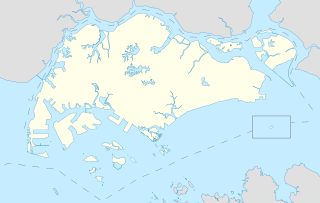 W
WThe Kenpeitai West District Branch was one of the branches of the Kenpeitai in Singapore besides the much noted Kenpeitai East District Branch during the Japanese occupation of Singapore from 1942 to 1945.
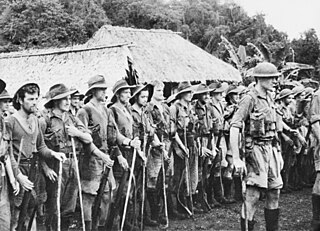 W
WThe Kokoda Track campaign or Kokoda Trail campaign was part of the Pacific War of World War II. The campaign consisted of a series of battles fought between July and November 1942 in what was then the Australian Territory of Papua. It was primarily a land battle, between the Japanese South Seas Detachment under Major General Tomitarō Horii and Australian and Papuan land forces under command of New Guinea Force. The Japanese objective was to seize Port Moresby by an overland advance from the north coast, following the Kokoda Track over the mountains of the Owen Stanley Range, as part of a strategy to isolate Australia from the United States.
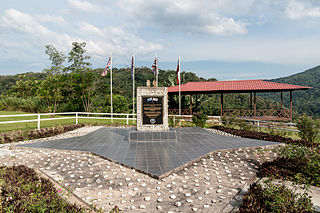 W
WThe Last POW Camp Memorial is a memorial in the district of Ranau in the Malaysian state of Sabah, which commemorates the victims of the Sandakan Death Marches who died during their march to Ranau. Of 1,047 British and Australian prisoners of war, only 189 survived to reach this site which is located near Liwagu Valley. Of these 189 total, 153 prisoners died in the next six weeks, 32 were murdered, while only four managed to escape. The current memorial was built where the former camp was located.
 W
WThe Lost Battalion was the 2nd Battalion, 131st Field Artillery, 36th Infantry Division of the U.S. Army. The men of the battalion, plus the survivors of the sunken cruiser USS Houston, were captured by the Japanese on the island of Java in the Dutch East Indies in March 1942. It is called the lost battalion because the fate of the men was unknown to the United States until September 1944. They were prisoners of war for 42 months until the end of World War II. 534 soldiers from the battalion and 368 survivors of the Houston were taken prisoner. Most of the men were sent to Thailand to work on the Burma Railway, the building of which is portrayed in the film The Bridge on the River Kwai. Of the 902 soldiers and sailors taken captive, 163 died in captivity. Most of the prisoners of war were from western Texas.
 W
WThe motor vessel MV Mamutu was an Australian merchant ship built in Hong Kong in 1938. She was of 300 gross tons, 113 feet (34.4 m) in length, and had a beam of 25 feet (7.6 m). She operated on an inter-island trade route for Burns Philp & Company, and at the outbreak of World War II, she was engaged in the evacuation of civilians ahead of advancing Japanese forces in New Guinea. The Mamutu sunk in August 1942 after being attacked by a Japanese submarine Ro-33 in the Gulf of Papua near Murray Island.
 W
WThe Manila massacre, also called the Rape of Manila, involved atrocities committed against Filipino civilians in the City of Manila, the capital of the Philippines, by Japanese troops during the Battle of Manila which occurred during World War II. The total number of civilians who were killed was at least 100,000.
 W
WMajor Arthur Moon was an Australian army doctor who saved the lives of dozens of Far East prisoners of war as the Thailand-Burma Railway was being constructed during World War II.
 W
WThe Nanjing Massacre or the Rape of Nanjing was an episode of mass murder and mass rape committed by Imperial Japanese troops against the residents of Nanjing (Nanking), at that time the capital of China, during the Second Sino-Japanese War (1937–1945). The massacre occurred over a period of six weeks starting on December 13, 1937, the day that the Japanese captured Nanjing. During this period, soldiers of the Imperial Japanese Army murdered tens or hundreds of thousands of disarmed combatants and unarmed Chinese civilians, and perpetrated widespread rape and looting. The event remains a contentious political issue and an obstacle in Sino-Japanese relations. The controversy surrounding the massacre also remains a central issue in Japanese relations with other East Asian nations, such as South Korea.
 W
WThe Nanjing War Crimes Tribunal was established in 1946 by the government of Chiang Kai-shek to judge four Japanese Imperial Army officers accused of crimes committed during the Second Sino-Japanese War. It was one of ten tribunals established by the Nationalist government.
 W
WThe SS Op ten Noort was a luxury Passenger ship built by Nederlandsche Scheepsbouw Maatschappij in Amsterdam, Netherlands and completed in 1927. The ship was built for and owned by Koninklijke Paketvaart-Maatschappij. Op ten Noort means Up North. In December of 1941 she became a Royal Netherlands Navy hospital ship. Shortly after her conversion the Empire of Japan stole the ship and renamed her Tenno Maru. To cover up the war crimes against the ship and her medical crew, at the end of the war, she was sunk on August 17, 1945. Before sinking her, she was again renamed to Hikawa Maru No.2, after the Hikawa Shrine, Saitama.
 W
WThe Palawan massacre occurred on 14 December 1944, during World War II, near the city of Puerto Princesa in the Philippine province of Palawan. Allied soldiers, imprisoned near the city, were killed by Imperial Japanese soldiers.
 W
WThe Pantingan River massacre took place during the Bataan Death March in mid-April 1942. Several hundred soldiers from the Philippine Commonwealth Army's 1st, 11th, 71st, and 91st Divisions on the march to the north of Mount Samat where the Pantingan River crosses the Pilar-Bagac Road were taken to the riverside. Most of them were shot, bayoneted or beheaded by the Imperial Japanese Army.
 W
WThe Port Arthur massacre took place during the First Sino-Japanese War from 21 November 1894 for two or three days, when advance elements of the First Division of the Japanese Second Army under the command of General Yamaji Motoharu (1841–1897) killed somewhere between 1,000 and 20,000 Chinese servicemen and civilians in the Chinese coastal city of Port Arthur. The battle is notable for its divergent coverage by foreign journalists and soldiers, with contemporaneous reports both supporting and denying narratives of a massacre by the Japanese military.
 W
WRo-33 was an Imperial Japanese Navy Ro-33-class submarine. Completed and commissioned in October 1935, she served during World War II in the South China Sea, Indian Ocean, and southwestern Pacific Ocean and operated in support of Japanese forces in the invasion of British Malaya, the invasion of Java, the Battle of the Coral Sea, the Guadalcanal campaign, and the New Guinea campaign. She was sunk in August 1942 during her fifth war patrol.
 W
WThe Sandakan camp, also known as Sandakan POW Camp, was a prisoner-of-war camp established during World War II by the Japanese in Sandakan in the Malaysian state of Sabah. This site has gained notoriety as the Sandakan Death Marches started from here. Now, part of the former site houses the Sandakan Memorial Park.
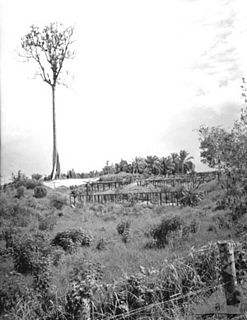 W
WThe Sandakan Death Marches were a series of forced marches in Borneo from Sandakan to Ranau which resulted in the deaths of 2,434 Allied prisoners of war held captive by the Empire of Japan during the Pacific campaign of World War II in the Sandakan POW Camp. By the end of the war, of all the prisoners who had been incarcerated at Sandakan and Ranau, only six Australians survived, all of whom had escaped. It is widely considered to be the single worst atrocity suffered by Australian servicemen during the Second World War.
 W
WSanto Tomas Internment Camp, also known as the Manila Internment Camp, was the largest of several camps in the Philippines in which the Japanese interned enemy civilians, mostly Americans, in World War II. The campus of the University of Santo Tomas in Manila was utilized for the camp, which housed more than 3,000 internees from January 1942 until February 1945. Conditions for the internees deteriorated during the war and by the time of the liberation of the camp by the U.S. Army many of the internees were near death from lack of food.
 W
WThe Selarang Barracks incident, also known as the Barrack Square incident or the Selarang Square Squeeze, was a revolt of British and Australian prisoners-of-war (POWs) interned in a Japanese camp in Changi, Singapore.
 W
WThe Sook Ching was a systematic purge of perceived hostile elements among the Chinese Malayans and the Chinese in Singapore by the Japanese military during the Japanese occupation of Singapore and Malaya, after the British colony surrendered on 15 February 1942 following the Battle of Singapore. The purge took place from 18 February to 4 March 1942 at various places in the region. The operation was overseen by the Imperial Japanese Army's Kempeitai secret police and subsequently extended to include the Chinese population in Malaya.
 W
WThe Tinta Massacre Site, near Merizo, Guam, has significance from 1944. Also known as Tinta (66-06-1223), it was listed on the National Register of Historic Places in 1991. The listing included one contributing site and one contributing object.
 W
WUnit 100 was an Imperial Japanese Army facility called the Kwantung Army Warhorse Disease Prevention Shop that focused on the development of biological weapons during World War II. It was operated by the Kempeitai, the Japanese military police. Its headquarters was located in Mokotan, Manchukuo, a village just south of the city of Changchun. It had branches in Dairen and Hailar. The Hailar branch was later transferred to Foshan. Between 600 and 800 people worked at Unit 100.
 W
WUnit 516 (第五一六部隊) was a top secret Japanese chemical weapons facility, operated by the Kempeitai, in Qiqihar, Japanese-occupied northeast China. The name Unit 516 was a code name (Tsūshōgō) of the Unit. It was officially called the Kwantung Army Chemical Weapons Section and operated underneath Unit 731.
 W
WUnit 731 , short for Manshu Detachment 731 and also known as Kamo Detachment, and Ishii Unit, was a covert biological and chemical warfare research and development unit of the Imperial Japanese Army that undertook lethal human experimentation during the Second Sino-Japanese War (1937–1945) of World War II. It was responsible for some of the most notorious war crimes carried out by Imperial Japan. Unit 731 was based at the Pingfang district of Harbin, the largest city in the Japanese puppet state of Manchukuo, and had active branch offices throughout China and Southeast Asia.
 W
WUnit 8604, also known as Detachment 8604, Detachment Nami or Detachment Nami 8604, was the Epidemic Prevention and Water Purification Department unit of the Japanese Southern China Area Army. It allegedly secretly researched biological warfare and other topics through human experimentation during the Second Sino-Japanese War (1937–1945) and World War II era. It was formed in Guangzhou in 1939, and headquartered at Sun Yat-sen University of Medical Sciences.
 W
WThe second USS Comfort (AH-6) was launched 18 March 1943 by Consolidated Steel Corporation, Wilmington, Los Angeles, under a Maritime Commission contract; sponsored by First Lieutenant E. Hatchitt, USAMC; transferred to the Navy the same day; converted to a hospital ship by Bethlehem Steel Co., San Pedro, Calif.; and commissioned 5 May 1944 with Commander Harold Farnham Fultz in command.
 W
WThe Zhejiang-Jiangxi campaign, also known as Operation Sei-go, was a campaign by the China Expeditionary Army of the Imperial Japanese Army under Shunroku Hata and Chinese 3rd War Area forces under Gu Zhutong in the Chinese provinces of Zhejiang and Jiangxi from mid May to early September 1942.